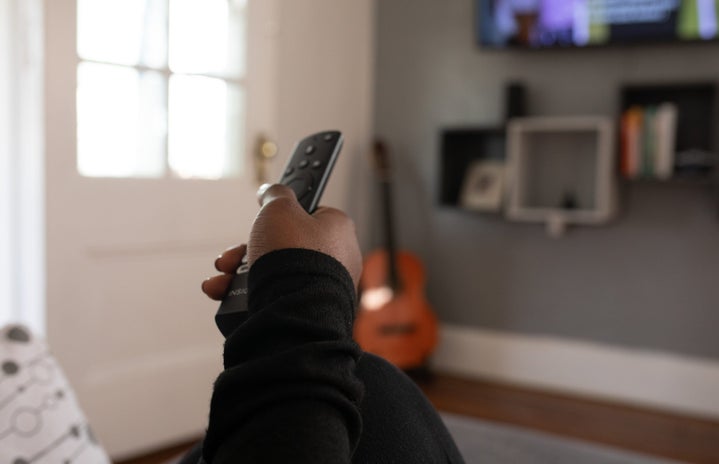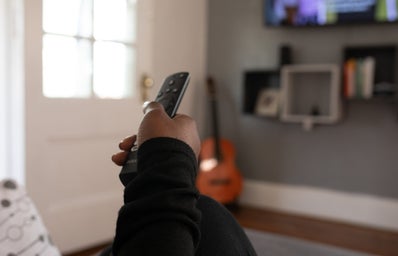I’ve always been a huge fan of movies and cartoons, which is a fact I know will never change. Something I’ve grown to notice is the way that characters have improved to become more multi-dimensional and better written. These specific characters, who are in media geared toward children, can serve as role models and inspirations to those growing up. While there are dozens of characters over the last few years that have broken out of the mold of typical tropes, these are a few characters that I feel represent strong and dynamic female characters in media.
Luisa Madrigal from “Encanto”
The whole world is buzzing about Disney’s “Encanto,” which is full of amazing characters and songs. This movie has loads of representation and relatability through the great cast. I specifically chose Luisa because her story and character are ones that break stereotypes. She is a strong character who felt like she had to be silent about her feelings, since she is supposed to be tougher than everyone. Her song “Surface Pressure” really helps to cement this. She is the strong one, and that what people need from her. Over the course of the movie, she learns to be vulnerable and open with her feelings, which is an important lesson to teach. You can be strong and vulnerable; reliable and emotional.
Her character design is also really refreshing, as she is allowed to be strong and muscular, but still wear dresses and present more feminine. She helps to break the stereotypes of the strong character role and still has her great development arc. Those points, including her POC representation as a Columbian, make her a great role model. She is relatable to older siblings, people who are afraid to be vulnerable, and anyone who is self-conscious about presenting differently than they may be initially perceived.
Anne Boonchuy from Amphibia
One of my previous articles was about the concept of tomboys and girly girls. I mentioned how there wasn’t a whole lot of representation for characters that were allowed to be both. Anne is a great example of a character that can be both unapologetically. She does sports and is a bit of a tennis prodigy, and she later learns to use a sword and is very proficient with it. She is not afraid to get messy or run around outside. However, she also has a lot of the typical girly-girl traits. She likes romance stories and bath bombs and enjoys spa days and dressing up. I really like her character because of these factors. She’s a character I would have liked to watch on TV when I was growing up. She is another example of a well-written POC character, as she is Thai-American and teaches other characters in the show parts of her culture.
She also is a good role model because of her development. She grows a lot throughout the course of the show, learning to be less selfish, to understand those around her, and to be more considerate. Before the course of the show, she was in a toxic friendship, and during the show, she learns how to overcome it and discover what a true friendship looks like. She’s a role model in that she likes multiple things, learns lessons as the show progresses, and is an overall relatable character.
Ahsoka Tano from “Star Wars”
Ahsoka Tano may have started out in “The Clone Wars” series, but she has grown into a well-beloved character who has now been in “Star Wars: Rebels,” “The Mandalorian,” “The Book of Boba Fett” and is even set to have her own show. She starts off as Anakin Skywalker’s padawan but grows way beyond that. She is a skilled and intelligent character, who learns what she stands for and sticks to her morals.
Throughout the course of “The Clone Wars,” Ahsoka learns about the effects of the war on the galaxy, about her role as a Jedi, and about the differing perspectives of those around her. She discovers more about the galaxy and that things are not as black and white as she thought they were. By the end of the show, she decides to leave the Jedi Order and set off on her own after she was wrongly accused of a crime and hunted down. She realized there is more to being a good person than what she thought. As her story progresses over the “Star Wars” universe, she almost seems like a whole new character. She’s a good role model because she is strong, stands up for herself, and is not afraid to speak her mind and make the decisions she thinks are best.
Luz Noceda from “The Owl House”
Luz Noceda is a breaking all sorts of stereotypes and providing all loads of representation. She has been confirmed to be bisexual by the shows creator, Dana Terrace, making her the first lead of a Disney show to be bi. She is also a POC character, being Dominican American and Afro-Latina. She has also been confirmed to be neurodivergent. Part of what is so great about her character is that these are all elements that are important to her character, but they are well integrated and not the center of her progression. She just simply is herself and grows in different ways. The focus of her story is not on acceptance of these factors of her life, rather on her journey of finding herself in a new world.
Luz is also a great character in the way she expresses herself and her interests. She is a nerdy character, liking books, video games, and making pop culture references. She starts the show getting in trouble for not fitting in and for being on the wild side, but she is able to lean into this and channel her creativity and energy in expressive ways as the show goes on. She learns that she should not apologize for being herself. Almost every part of Luz’s character provides representation, whether it is for her identity, the ways she expresses herself, or her interests.
Sophie Hatter from “Howl’s Moving Castle”
Hayao Miyazaki, known for his works with the Japanese animation company Studio Ghibli, has helped bring amazing stories of fantastical events to life. A majority of the main characters are strong women who are determined to accomplish their goals. He once commented that “[m]any of [his] movies have strong female leads—brave, self-sufficient girls that don’t think twice about fighting for what they believe in with all their heart. They’ll need a friend, or a supporter, but never a savior.” Sophie from “Howl’s Moving Castle” is a great example of this.
Early in the movie, she’s cursed by the Witch of the Wastes, but rather than having a pity party, she accepts it for what it is and sets off to find the Wizard Howl, who she quickly befriends. She accepts her new role and her new life with Howl and learns to love herself, which is eventually what breaks the curse. Like Miyazaki mentioned, she didn’t need Howl to save her, but rather he helped her realize her full potential, and she even wound up saving his life and stopping a war between kingdoms. She learns self-love and acceptance and works hard for what she believes in, defending her newly found home and friends. She didn’t start out as the hero, but she became the hero of her own story. Both the original book by Diana Wynne Jones and Miyazaki’s interpretation paint her as a strong and determined protagonist.
Astrid from “How to Train your Dragon”
Astrid at a first glance fits into the typical tough girl role, as she is aggressive, bold, and speaks her mind. However, over the course of the first movie, the audience gets to learn more about her as they figure out how eager she is to prove herself, how she is secretly scared and is forced to face her fears when flying with Toothless for the first time, and how willing she is to accept that there is more to the world than she first thought. She accepts the new information that Hiccup gives her about the nature of the dragons and is a supportive and loyal friend. She is a strong and determined character who fights for what he believes in, while still being willing to accept new and sometimes conflicting information.
Over the next two movies, she retains her motivation and strong nature, but also serves as a voice of reason for Hiccup, supporting and guiding him as he tries to change the world for the better. Their relationship develops in a dynamic way, but no matter what, she stays loyal to her friends and never plays the damsel in distress role. She is a great example of a strong female character who is still open-minded and supportive, rather than brash, rude, and closed off.
Representation in all of its forms is important to recognize and acknowledge. These are just six examples of characters who are good role models. They are not the first and are certainly not the last, but each of them has their place in providing a voice to those who need it.


